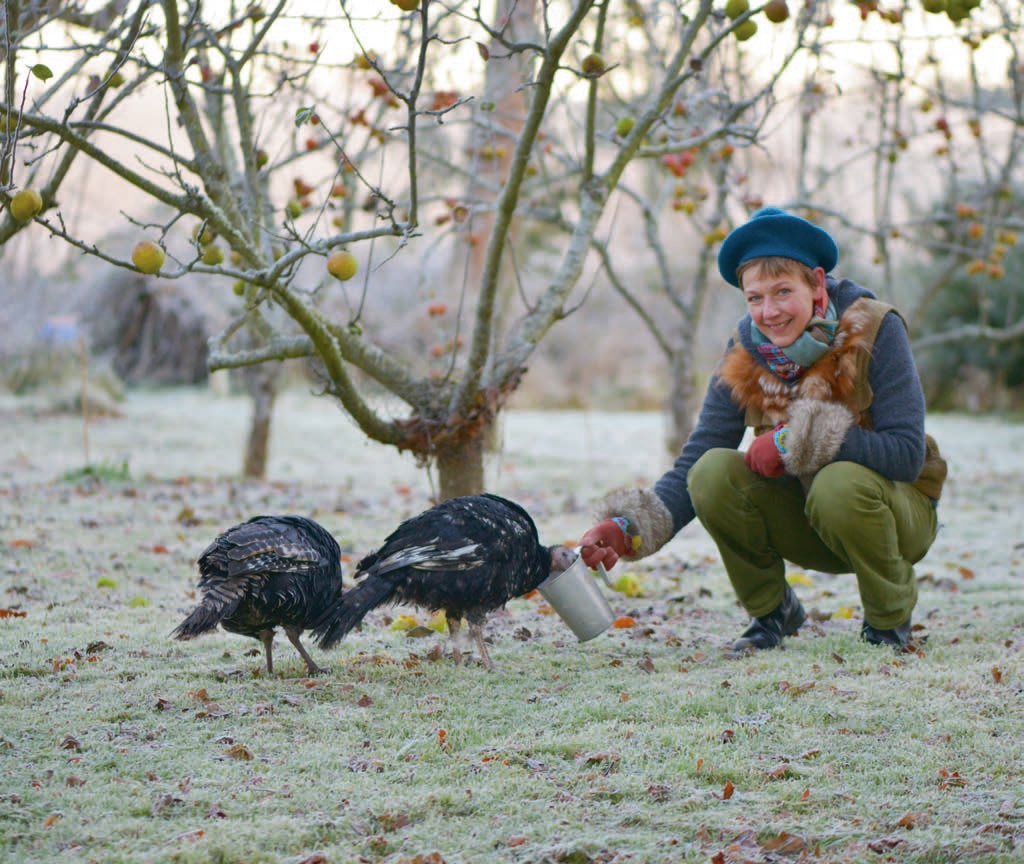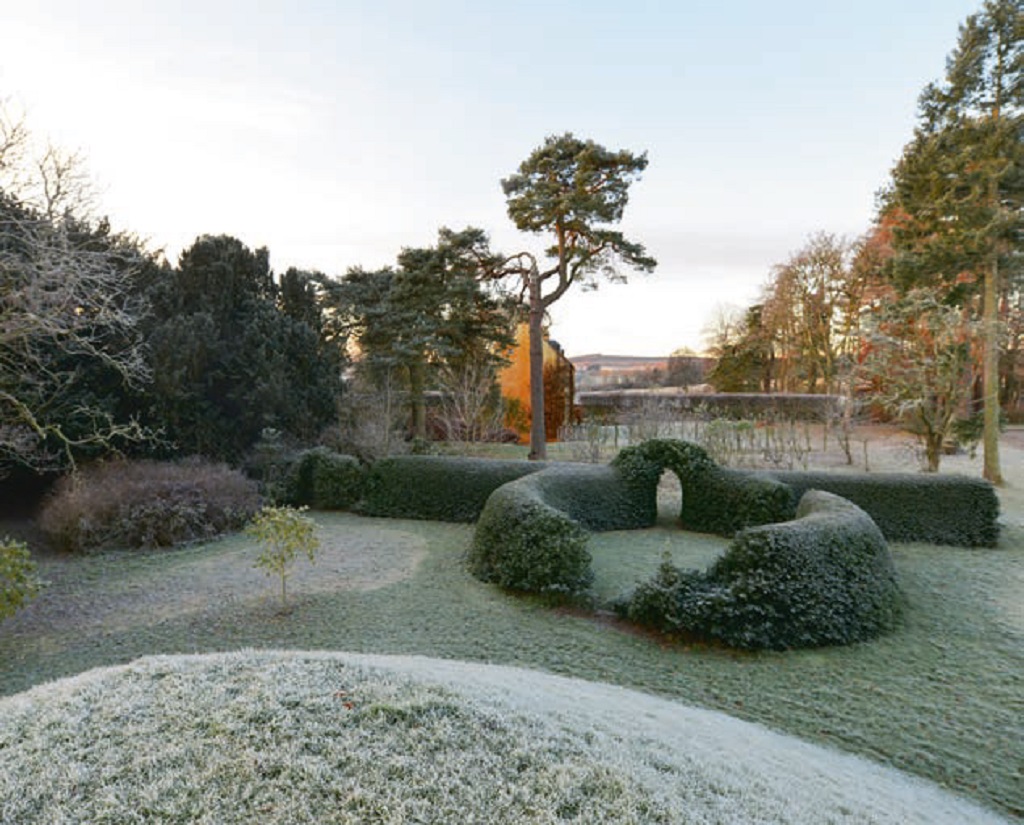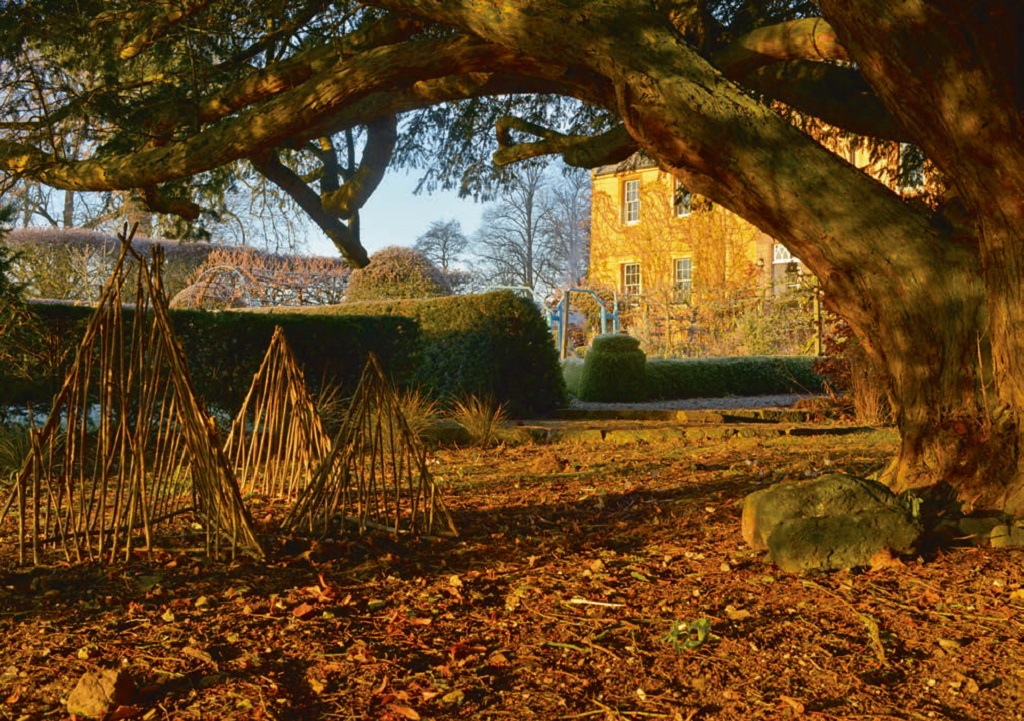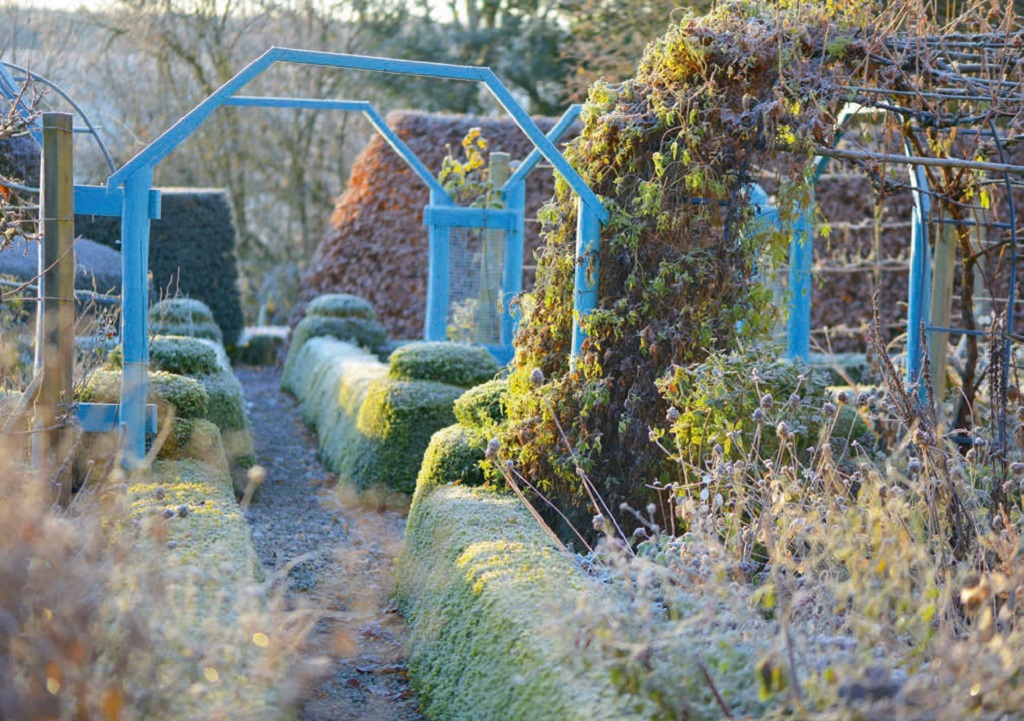Jay Jay Gladwin’s personal touch makes all the difference as wildflowers and beneficial weeds boost the bee population in this Black Isle garden.
When Jay Jay designs a garden she thinks about three things: structure, atmosphere and plants.
‘I ask a client the obvious questions about garden use and what they like but I also ask them for a prayer, a poem or a song,’ she says. This, she continues, is a powerful way of linking clients to their garden while giving her an insight that allows her to create the right atmosphere.
These principals were developed during the creation of her own garden at Old Allangrange, the 17th century lime washed house near Fortrose on the Black Isle she moved to with her husband David in 1995. The couple, who have two children, Imogen and Geordie, inherited a near-derelict house with no garden other than a ‘few, splendid mature trees. The spectre of a gravel car park in front of the house was an imminent danger,’ she says.
While David set up Black Isle Brewery in 1998 – the only organic brewery in Scotland – Jay Jay, a trained furniture restorer, established Allangrange Furniture Restoration. ‘That business is now largely run by the three people who work with me, leaving me free to concentrate more on gardens,’ she says.

Jay Jay Gladwin feeding her turkeys (Photo: Angus Blackburn)
Meanwhile the sight of fields devoid of hedges and an increased use of chemicals in farming was impacting her thinking. She became convinced that gardeners could play a part in redressing the balance year-round.
Designs could incorporate shape, perspective and colour while including fragrant and wildlife-friendly plants, which are beloved of bees, butterflies and other insects. At Allangrange, Jay Jay wanted the design to feel mysterious and secretive.
Happily, David agreed to siting the gravel car park at the side of the house and two years after moving in to Allangrange, the couple planted the Italian-inspired structural element of the garden: a classical layout of box beds inspired by the Saltires engraved above the house doors.
This was closed by a double layer of beech and lime; once established the lime was pleached – the trees now form a striking approach. The Saltire design is enhanced by Jay Jay’s skill in punctuating corners and triangles with generous box shapes, cones and pyramids highlighted with balls and buttons. Elsewhere, hedges were enhanced with elegant cloud pruning.
‘This detail makes the garden a richer, more satisfying place to be,’ she says.

The holly circle with the mound behind (Photo: Angus Blackburn)
She learnt to angle the clipper and play with shape and found the techniques also had a practical application. ‘The decorative and sheltering effects hedges have on wildlife are especially important in winter. Bees hibernate on the north side of hedges, sometimes in mouse holes, so they don’t wake up too early and come out when there is nothing for them to forage on.’
Here, in winter, they find fragrant winter varieties such as Mahonia ‘Charity’, winter flowering honeysuckle, Fatsia japonica and different willows also elsewhere in the garden.
In January, large tracts of Pulmonaria ‘Robin Redstart’ in the lower garden provides food.
‘The Pulmonaria is combined with Alkanet, Alkanna tinctoria, a member of the Boraginacea family, many of which are attractive to bees.’
A stand of yew trees link the parterre to the cutting garden. Lit by the low winter sun this grove, always mysterious, takes on an even more mystical quality. Standing under the yew trees the stillness is tangible. ‘The yews are one of the joys of the garden, a close ancient presence,’ says Jay Jay.

An ancient stand of yew trees brings a sense of mystery to the garden (Photo: Angus Blackburn)
The spiritual side of the garden is equally important to Jay Jay and the Holy Trinity is represented in a trio of circles. Starting with a cobble circle at the entrance gate, and then moving to the far side of the orchard, past the beehives, there is a holly circle, with the mound rising directly behind. Climbed via a circular path the mound offers a fine view of the farm.
‘The mound is enclosed by 12 aronias, representing the 12 apostles. Unobtrusively, it is a prayer, at the centre of the garden,’ she says. Anyone who loves gardening ‘always wants to expand’, she continues, leading the way past the brewery to the newest part of the garden.
The well-laid-out kitchen garden, complete with a 160 sq.m Keder Greenhouse, was installed to provide vegetables for the house and supply the Black Isle Bar, the brewery bar in Inverness, with bio-dynamically grown vegetables. The vegetable garden extends into a one-and-a-half acre paddock beyond and includes a nursery where wildlife friendly plants are grown. ‘Organically grown edible plants are quite easy to get hold of but there are only a couple of nurseries growing herbaceous perennials, shrubs and trees organically, so we have started a small nursery to grow our plants.’

Smothered in plants, the blue metal arches add a vertical dimension (Photo: Angus Blackburn)
Exciting plans are afoot. ‘Next year, through Professor Dave Goulson of Sussex University, founder of the Bumble Bee Conservation Trust, we will be welcoming students from Sussex University to assist in a variety of ways. Some will be simply volunteering, and others doing projects as part of their degree, to gain more knowledge about bees and their requirements. This will enable us to design gardens more specifically with bees in mind.’
But already it can be seen that the way they are gardening at Old Allangrange is benefiting bees. On a recent visit, common carder bees and buff-tailed bumble bees were feeding on tall, purple flowering giant hyssop Agastache ‘Black adder,’ rusty foxglove, Digitalis ferruginea, and white flowering Ageratina purpureum, all with exceptionally long flowering periods. Recently Jay Jay counted 25 bumble bees on just one square metre of Agastache.
When the gardens are open to the public, Black Isle Bee Gardens receives 40 per cent of the money.
Visit HERE for more details.
(This feature was originally published in 2017)
TAGS

